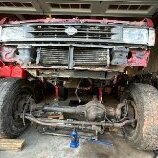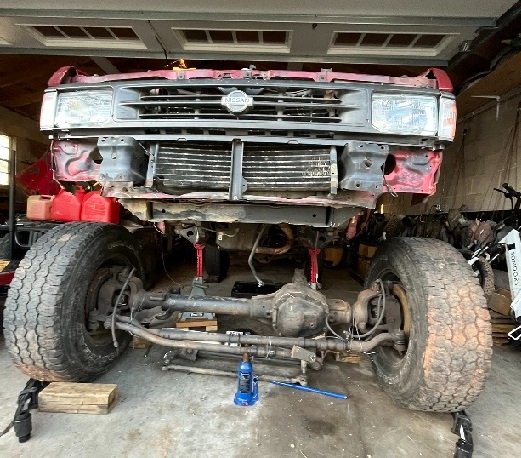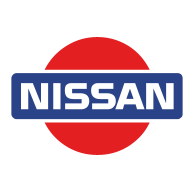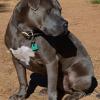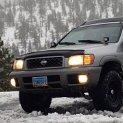Leaderboard
Popular Content
Showing content with the highest reputation since 04/29/2023 in all areas
-
Hauling my 02 shell with a blown engine from cali to AZ. The pilot didnt like it too much but survived. Next to stock after i finished the first part of the build with a fresh JDM 3.5, new suspension and lift. Maiden voyage shakedown run doing what it was built for Found some mud in the desert this spring Went through some fairly rough stuff to get a nice pic at lake havasu Latest addition, halfway through a coastal offroads bumper, adding the swingout gate soon6 points
-
6 points
-
Beauty shot from camping this morning with the clouds below and Mt St Helens above. @zakzackzachary Should recognize this spot!6 points
-
Couldn't stand my stock headlights any longer. In the middle of retrofitting Morimoto D2S 5.0 HID projectors:5 points
-
I run a company that advertises vehicles for dealerships. Threw the pathfinder in the booth today for fun!5 points
-
Found a great spot for a photo![emoji3531] Enviado desde mi iPhone utilizando Tapatalk5 points
-
Time to give this subforum some love... In a couple weeks, I will have owned my Pathfinder for 10 years. I bought it as a birthday present to myself, having traded in a 2008 Wrangler 2-door several months prior for an SUV that could actually fit two baby seats (unlike a 2-door Wrangler). My kids just turned 10 and 11 the other day, so I'd say we're way past that point. Time flies. I purchased the truck with just under 166K miles, and in another 400 miles it'll reach 200K. It just turn 20 yrs old. Some milestones here. You could say I've done a few things to the truck over the years. As it sits today, it's got front and rear air lockers plus 3.97:1 crawler gears, among other things. I've finally sorted a few gremlins that have plagued me for the last year-plus. Sold the bumpers a few months ago; need to build new ones. But right now, I've been hankering for something significant, and if I don't spill it here, it may never happen. So, here goes! I think it's time to SAS my truck. I've been stewing on this for a long while. In August 2021, I bought an incomplete SAS project from a guy that included a Dana 44 axle, a bunch of new parts including matching gears for both the D44 and H233B diffs, an Xterra TX10, and even the 2000 Frontier everything was destined for. I mainly bought the SAS parts for $1000, but the truck with a blown headgasket was only another $700 so I bought everything. The axle was rebuilt (sorta). The truck overall was disgusting, but at some point I at least considering repairing the truck and possibly completing the SAS on it. I literally gutted the interior to clean out layers of filth in the form of dog hair and caked-in dirt to clean everything, but in the end, I didn't need a 3rd truck and sold it to a buddy. But, here I am with all the SAS parts still...and then some. Since then, I have properly rebuilt the Dana and bought and sold a few other parts towards the project. I've not officially started it yet, but I plan to soon especially since a few suspension and steering parts are already due for repair and replacements. At a very high-level, these are my project goals/objectives: Keep costs low. To date, I'm already in $2500 in parts (factors parts bought and sold), and another $500 in tools/consumables. I expect to spend another $1000-$1500 in parts and tools, but also probably recoup another $1200 in parts. $5K seems like a reasonable cap. I am tracking all my transactions. I've also bought several parts either on clearance, or from others who've abandoned their SAS projects. Restore gearing. I swapped in 4.63s long ago, but as we know, this is the end of the line for R50 owners. SAS opens up gearing options, and this might be the number one reason for me. Keep the ride reasonable. I am not doing this to go overboard on lift or tire sizes. In fact, I expect and want to end up a little higher than where I am (currently about 5" of lift between OME HD and 3" SFD up front, and 9448s and 2" spacers in rear for 6" lift). I do not ever expect, nor want, to run more than 35" tires, and I have plenty of life left on my 33" tires. Build confidence in parts. I've never had trail failure with CVs, TREs, shocks, springs, bearings, hubs, etc., which is great. But...I'm also at my max comfort limit. Without any beefier steering and suspension part options available, it may just be a matter of time. The axle, suspension, and steering options I have in mind will give me a ton more confidence. Not regress on things. I expect everything I install will be better than what it's replacing, though probably the most debatable part might be my choice of leaf springs vs. IFS in terms of ride comfort. But going to a straight axle will inherently change the ride comfort, regardless of the suspension type chosen. Breakdown of components: Axle: The D44 I have is from a 1981 Jeep Wagoneer SJ. It's the "narrow-track" version with a WMS-WMS width of 60.75". According to my notes, I measured 62.25" WMS-WMS on my current stance, but can't recall if that includes the 3" worth of wheels spacers I use (I don't think it does). So, this should be pretty close, and if I have to run spacers again, no sweat. It's also a low-pinion axle; the high-pinion R200A is preferable here, but the slightly larger D44 gears might make it an even trade-off. Suspension: The axle is set up for spring-under-axle (SUA) using leaf springs, and that is the approach I plan to take. I mulled over all the other suspension types, and while something like a linked or radius arm setup seems great, it's simply out of budget. I've read no shortage of past and current comments about how dumb leaf springs are, how dumb they are on a truck/unibody with 4-link rear, how old-tech they are...blah blah blah. I'm not trying to ignore such advice and comments, but realistically, it's how I want to allocate my money and effort, and it aligns wonderfully with what I want out of a finished truck. That said, the SUA approach greatly simplifies a lot of things for me and that's why I like it. I plan to use OE leaf springs for the Wagoneer (I have new Dorman units). With an offset center pin, they should allow me to move the axle about 3" forward from the current driveline. Instead of shackles, I will use leaf spring sliders. Mounting everything will be a challenge. I intend to make a subframe that uses the existing subframe mount points and has the provisions for the front leaf eyelets. The rear sliders may be incorporated into a new or modified transmission crossmember. Plan to make everything from scratch to keep costs down...plus I have a CNC plasma table and small press brake, so there's that. I will also not do a traditional u-bolt setup to attach the axle to the leaves. Instead, planning to make a u-bolt eliminator kit to minimize parts hang-down under the perches. I'd love to do a RA or linked setup, but the decision alone instantly adds $1K-1.5K to the budget between joints, coils/coilovers, and material. There are savings here and there, but it's not significant. I've also considered going to a spring-over-axle (SOA) setup, but this will also greatly introduce costs, namely needing to buy a high-steer knuckle, potentially needing to "cut-and-turn the C's" to correct pinion and caster angles, and also adding about 5" more lift than what I want. Gearing: I will be going to 5.13 gears. On 33's, it'll be about -3% over-geared, but on 35's, it'll be about +1%. The axle originally came with 5.89's installed and in-box for the H233B, but I sold those. Too much for my needs. Differential: I already run an ARB in the R200A, so of course I'm locking this one. Axle came with a Spartan lunchbox locker, but I sold it and bought an ARB instead. In between, I bought an Auburn eLocker/LSD combo (LSD when it's not locked), but it arrived with all sorts of damage so I returned it. Hubs: Axle came with old Warn Premium hubs, but bought some new Mile Markers on the cheap from Amazon Warehouse. Warns will serve as backups. Brakes: The axle came with all new/rebuilt brake parts, which is great. They're beefy. However, this setup means defeating ABS braking since this is axle is 40+ years old. Many people won't care and just plan to delete or omit ABS, but I don't like defeating or ignoring systems, especially not considering how pleased I am with the braking performance on my truck with the rear discs. Plus, I think the speedometer factors vehicle speed by the wheel sensors, since there isn't a speedometer pinion on the t-case. To get around this, I'm going to mimic a setup a guy uses where he machines down the Dana hub to accept a tone ring and use Hummer H3 rotors and calipers on it. A new caliper bracket adds the provision for the wheel sensor, and it's a perfect a solution. In my case, I would do pretty much the same, except I will keep the R50 calipers. Comes to find out, an H3 rotor is the same thickness as the R50 front rotor, and the diameters are very similar (H3 315mm vs R50 300mm) to the point I can just move the caliper out a little. Also worth noting is that on the Dana hub setup, the rotor is mounted behind the hub, kind of like our R50 setup. In taking this approach, the rotor will install over the hub, which will increase the WMS a small amount (about 1/2") and make rotor changes easier. Steering: The axle came with a 3/4" Heim steering kit, which is pretty beefy. But, I didn't like that it was essentially going to be a straight bolt in a tapered hole on the knuckle. No way that won't wallow out in time, and it seems most people suggested modifying the knuckle to make it double-sheer. Instead, I'm going with a GM 1-ton tie rods. These are beefy, too, and I have less worries about shearing. I will have to ream out the knuckles and pitman to get things to work, but I have the reamer. The kit also included 1.5" OD x .25" wall DOM tubing, and although the previous owner already got the tie-rod to the perfect length for the setup, I'll need to cut off the ends to weld on new bungs for the GM setup. For the steering box, I'm planning to use a one from a 2001 Jeep Grand Cherokee (WJ) 2wd. This will sit inside the chassis rail. Would've been nice to stick with Nissan and use a Frontier or Xterra gearbox, but those sit outside the their frames and I didn't feel like cutting through the wheel well. Fortunately, these WJs use metric fittings, so hopefully adapting the lines won't be difficult. Shocks: TBD. I have three pairs of shocks once fitted to R50s, including the last two longer sets from my own truck while lifted. I plan to use them if possible to keep costs down. Mounting them will be a challenge. Easiest approach would be making new plates that mount where the strut does, but I think it'll be too high up from the axle. I don't want to make the mounting tabs from it extend too low, but I have other ideas in mind. Subframe/Motor Mounts: This will be the most complicated part. Won't know my exact approach until the OE subframe and everything else is out. I also plan to make some new motor mounts using poly bushings I have around. ... Right now, I'm waiting for an engine support bar to get delivered sometime next week. I may start pulling things off the truck and get this going very soon.4 points
-
Finally finished the first half of my Coastal Offroad bumper. Now need to build the swingout tire carrier and jerry can holder.4 points
-
4 points
-
4 points
-
One of my favorite topics. I'll take a different path to promote further discussion, but for starters I'll say an LSD (even a repacked one) isn't a true substitute for a locker. They're great for having a street and trail balance, and they can be made to do very well off-road, but they're simply not a locking differential. If there was a traction level chart that was specific to our trucks based on available device options, it might look something like this: Level - Front Diff, Rear Diff, Suitable Trail Use (Green/Blue/Red) 0 - Open, Open, Green 1 - Open, LSD, Green 2A - Open, Mechanical, Green/Blue 2B - Open, Selectable, Green/Blue 3A - Mechanical, Open, Blue 3B - Selectable, Open, Blue 4A - Mechanical, LSD, Blue/Red 4B - Selectable, LSD, Blue/Red 5A - Mechanical, Mechanical, Red 5B - Selectable, Selectable, Red Clarification points: For LSDs, there's obviously a scale between OE-spec LSD units and re-packed units, but they're still in the same traction level. "Mechanical" refers to auto-lockers (auto-unlockers, lunchbox, etc.) like Lokka (front) and Blokka (rear) units. "Selectable" refers to any locker that can be disengaged on demand, regardless of actuation (air, electric) : ARB, TJM, TRE Selectable lockers always have the advantage over a mechanical locker because they can be disengaged. This is particularly important when in tight steering situations, and everyday street driving. (This discussion ignores the use of manual hubs.) Levels 0 & 1 are still fully trail-capable, provided all tires stay on the ground. Once one tire lifts off the ground, especially on an incline, limitations immediately kick in. Notably, it's relatively easy to lift a tire with IFS. When coming from Levels 0 or 1, I advocate locking the front diff (level 3) before locking the rear (level 2), mainly because of issues that can occur when a front tire is off the ground and not rotating in unison with the other tire. That is, if you have a front tire spinning off the ground and you land on it, it's bad on the CV, mmmmkay? I'd skip level 2 for the most part. Level 4 & 5 do great for wheeling, provided you're mindful that an LSD is not a locker and that, at some point, it will start to act like an open diff. Red usage would basically warrant a re-packed LSD.4 points
-
Limited slip differentials are a more affordable way to get better rear end traction on most surfaces and in most driving conditions. However, in extreme cases such as rock-crawling or climbing very uneven and steep obstacles which could result in a rear tire having little to no traction, a locking differential provides the best solution in order to overcome the obstacle with the least potential for damage. Damage could be caused either by excessive wheel speed which could result in drivetrain damage, or excessive vehicle speed, which could result in loss of control, leading to undercarriage damage, body damage, and/or drivetrain damage. A very tight LSD could potentially cause some handling/cornering issues on pavement. If you do little to no rock-crawling, the LSD could be a satisfactory option. In my case, the effort/expense of pulling the third member, repacking the clutch pack to increase the breakaway torque, then reassembling it, was not worth the risk of discovering that it still might still not provide enough performance benefit for my style of 4-wheeling. It is for this reason that I opted to just go all-in with an ARB air locker. My R50 is air-lockable both rear and front, but it took a decade of wheeling for me to get to that point. Every driver's situation is different, so the approach to mods I would recommend is to run the trails you enjoy, get lots of seat time to learn how to drive within the vehicle capabilities, learn to choose good lines, and plan your vehicle upgrade path accordingly. Tires are probably one of the most important things to start with, with a lift being next. I would prioritize recovery equipment above drivetrain mods. A locking diff or tight LSD may only give you the ability to get you stuck further down the trail.4 points
-
Thanks all, turned out to be a simple fix- the hose had just pulled off the barb on the drivers side of the radiator. I reseated it and move the spring clip to where the hose wasn't indented from it. Thanks also for the tip on fill-run-fill-run. It took quite a few times of letting the fluid work through before the dipstick continued to read full. I think that when I backed up in the deep snow, the plastic under guard scooped up a bunch of snow and ice and pushed the hose sideways until it popped off. A good thing to keep in mind for the future- it would have been worth it to dig the snow out.3 points
-
3 points
-
For sure you'd need an older #1 coil. For the other coils: 2a: It's possible to swap the boots older-->newer, but you also need the spring 2b: You'd need to lengthen the boots, which would prevent spark plug contact, so this is a no-go. 2c: Since the older coils were intended for the older covers (aluminum), this is the most correct route. That's what the guy did in that Nico post (man...I barely had the truck 2 years when I was chiming in on that...how things have changed). That said, I did some R&D for you... Newer coil on left, older on right. When aligned by the mounting tabs, the older is about 1/2" longer. When aligned by boot length, they are the same length. The older coil's mounting tab sits above the plastic valve covers mounting hole by 1/2". As mentioned earlier, you can probably still fit the newer style in cylinders 2-6, but the coil has to be turned enough to avoid the mounting boss on the aluminum covers. You could possibly use a screw and washer in the boss to retain the coil to some degree. Taken apart, you can see all the parts are different. Although the spring in the older unit is quite longer, it sits deeper in the hole in the module. All the tube parts are shaped differently enough that fitment isn't great if you were to swap things around, but it's somewhat possible. With springs in and aligned by mounting tab, the older coil is still 1/2" longer. If you put the older style boot and older spring onto the newer style module, the boot fits nicely and everything else seems to be the correct length and position. Not that it matters here, but the newer boot will not fit the older module unless the top of the boot is cut off. Now, since the springs are different, I have no idea what impact it has switching it. I also don't know if you can get the boots and springs. I'd say that if you're at a junk yard and pulling them, you may as well just buy the complete coils. Although my personal opinion is that the additional cost to do this project doesn't really have much ROI, unless it's just cheaper than buying new plastic covers. Hope this helps.3 points
-
Looks like I've talked myself into doing a radius arms setup at the 11th hour. I'll just have to keep things on the cheap affordable side as best as possible. Conveniently/suspiciously, my Facebook feed today showed a local Marketplace listing for an adjustable track bar (panhard bar) and OE sway bar with disconnects from a JK Wrangler. Met up with the guy, talked shop, observed the cringe-face when I mentioned "unibody", and made the deal for $100 for everything. Track bar could be a $115 Amazon knock-off, a $150 Rough Country unit, or $325 Teraflex unit because they are identical. Key thing is that it's shaped to wrap around the diff cover and it's adjustable...and within the range I'd need it. Does need to be freshened up and bushings replaced, but that's easy stuff. The JK sway bar is straight and beefier compared the R50 unit, which I was already planning to reuse but poses some complications because of the shape. I'll probably toss or sell the disconnects that it came with; they're worn, but appear to be a rather expensive Teraflex set. I plan to run disconnects either way. Engine support bar arrived the other day and the garage is as clean as it's getting. I may start tearing things down in the morning. To be honest, this project terrifies me more than any other I've done so I'm dragging my feet to dive in. Pulling stuff off is easy, but there will eventually be a point-of-no-return moment that I hope I don't dread.3 points
-
3 points
-
3 points
-
Looked better tucked into the hole IMO but I imagine the neck makes it easier to read and reach the screen. How's that pivot locked? Looks like something that could start working its way down after a few good bumps. I kept mine simple, basic single-din HU that I can plug an ipod into. I spend enough time swearing at touchscreens when I'm not driving. When I need maps, I just stick my phone in the ashtray. +1 for Dire Straits, though.3 points
-
The Pathy is on it's way. Paid 400 for it and it came with a hardbody I sold for 800 after pulling the motor. $1k in parts roughly. Pics and progress and videos coming soon. I'll be up there at my farm in Oklahoma to finish it for over a week coming up in a few days. the image size thing is wildly small. lol3 points
-
Yes! I'll probably do a more in-depth post in my build thread when I can but these are headlight buckets that a guy in Australia designed & 3d printed, and allow you to swap in LED sealed beam style 5x7 lights. There are cheaper options for the 5x7 lights themselves, but I went with a set of Morimoto LED's.3 points
-
FYI, Bilstein 33-185569 are a slightly less expensive alternative to the recommendation above with similar performance. I have these on my 6" lifted R50.3 points
-
2 points
-
Not sure how long the forum was down, but it was caused by a PHP error on the server. And a thanks goes out to @adamzan for bringing it to my attention.2 points
-
Whoops! I'm an idiot. I've still got you covered. Pull the kick panel under the dash, then pull out the foam in there and you'll find the hose tucked back in there.2 points
-
Initially, I looked into threaded fittings and I think I identified all the ones I would need, so the hope is that a crimper isn't even necessary. Main concern is just the high pressure side as I will retain the pressure sensor on the line. Main parts are just the banjo at the pump, a tee for the sensor, and fitting at the gear box. Low side is just hoses through a new cooler and hose clamps. ... Slow progress yesterday, mainly just a full mock-up day. Right now, axle's looking real good 2" forward. I originally had the truck lifted about 5" higher than it was previously, but lowered it down to about 3" higher. Supposing I can get it at that height, that'd net about 8" of lift from OE height which I guess feels low for a SAS project, but in reality meets my project goals better. The rear is currently about 6" over stock and at this 8"/6" stance, the truck is perfectly level according to my sliders. When the front is done, I will be redoing the rear suspension to also move the axle back about 2" to center it up in the wheel well and at that point I'll probably lift another 1-2" to get some rake back.2 points
-
Well, project officially began today. Had some helping hands: Just need to figure out how to sling the engine up. No good attachment points on the passenger side at all. Once I figure that out, I can pull the subframe and finally have a clean slate for mock-up.2 points
-
I see that your head unit and adapter connect using RCA plugs. I haven't set up a head unit like that, but the first thing I'd do is poke around in the owner's manual to see if there's some some setting you need to change to switch it over from the internal amplifier to the RCA outputs. I would also double-check that the RCAs are plugged into the correct holes--looks like you want the four closest to the power plug on the back. If it's not that easy, check fuse #4 (15A), in fuse box JB (looks like that's the one under the dash). That's the unswitched power feed for the audio system, and while the head unit may power up without it (it also gets power from the ignition switch), the audio amps (there are actually three of the little blighters) will not. If that fuse is blown, check your work, because fuses usually blow for a reason. Check your color code match-ups, look for damaged insulation/slipped-off heat shrink, make sure the pins aren't folded over in the adapter plugs, and make sure you didn't pinch a wire when you bolted the radio back in. If the fuse is good, and you test from the yellow wire in the head unit plug to ground, and you should see around 12v whether the key is on or off. The only other thing I see that could take out all the amps at once is the turn-on signal from the head unit, the one you mention in your second post. It should be blue/white coming out of the head unit. Confirm that this connects to the light green/red wire in the harness, and confirm that it tests at +12v when the head unit is trying to play music. If that checks out, I would try and track down the relay for the front speakers to confirm that it clicks when the radio turns on and off, or find the rear amp and verify that it's getting signal to the appropriate pin. The circuit diagram for the Bose audio system is on EL-145 of the '99 manual (download it from Nicoclub if you haven't yet).2 points
-
Sure, pal! I'm waiting for my D2S bulbs. I am tempted to take them off my other car but I'm sure Mr monkey-hands will damage them. Wiring is all done and this has been by far the easiest retrofit I've done. No wire stripping, no drilling or dremeling and the shrouds are like tailor made for the reflector bowl. The only problem has been finding where to mount the ballasts, but mostly because I want them hidden. I don't like the blacked out headlight look so I'll try to avoid painting the reflector bowl unless I see stray reflections that could cause glare. Once I get the bulbs and make sure the cutoff is straight, I will post some pics.2 points
-
It depends on the year. AFAIK this is only valid for throttle-by-wire Pathfinders. Here is the procedure: https://www.nissanhelp.com/diy/pathfinder/projects/nissan_pathfinder_idle_air_volume_learning.php Notice that before doing the air flow reset, you must do a couple other procedures beforehand. You feel like someone's trying to pull a prank on you, but that's really the way it's done.2 points
-
Thanks, I've been very happy with the truck. Still have a bit of a to do list; finish the rear bumper, front lokka, beefed up lsd, start welding the front bumper... Sorry to hear your VQ might go. I honestly couldn't tell you first hand how the swap went as I have a trusted mechanic and had his shop do all the heavy lifting but he did say there were a few things that needed to be slightly modified to have it fit correctly. It apparently had some components that weren't on the original engine, however, he said it wasn't a huge issue and got it done in just a couple days. Not sure what vehicle the "new" engine came from, but it was a much newer year model with only 55K on it and runs great. I got in there with him on some of the suspension work and that wasn't too bad either. Removing the tranny for the new clutch was a major pain in the ass, that thing is huge and heavy.2 points
-
Control arm bushings would explain the wobbly feeling. Bottoming out sounds like shocks or springs. If the ride height is OK, I'd start with shocks. I put KYB Excel-G shocks on mine and they haven't given me trouble.2 points
-
You do have to have the CV fully removed. It's supposed to be in tight, so putting up a fight isn't unexpected. Most of the time, I will resort to the following processes, in this order: 1. Loosen the nut, but leave it in place at the bottom of the stud. Smack the knuckle with a sledge hammer a couple times, then smack the bottom of the nut upward. Repeat. 2. Ball joint tool on the joint, tightened up so that there's tension on the joint, then sledge hammer to the knuckle. Joint tends to pop here. 3. Pickle fork. People seem to dislike them, but I've never had it not work, it's just usually a little more aggressive. 4. Heat the knuckle for a little bit, then do #1. Smacking the knuckle a few times is key. Just changed my passenger ball joint a few days ago. #1 was all I needed, but I'm fortunate to live in a dry region.2 points
-
If the diff is already installed, to check your ratio, chock the front wheels, lift one rear tire, shift transmission to neutral. Put a piece of tape on the top of the pinion yoke. Spin the tire one full revolution and count the pinion rotations. Just over 2-1/4 rotations is 4.63. A smidge under 2.5 rotations is 4.92 points
-
I've been trying to accomplish full independent fog light operation (with stalk switch fully functional, with parking lights and regardless of high beam state) through simply rewiring the existing relays (I don't want to fiddle with steering mounted stalks, switches or interior wiring). There are differences between facelift model years in those electrical workshop manuals (check 2001 vs 2003 for example), so I'd recommend grabbing your multimeter, testing the relays and not fully trusting what you read. Here's a Nissan lighting relay for reference: The only thing you should focus on are terminals 1 and 2. Those have to be power/ground for the circuit to close and send power to the lights. It doesn't matter if terminal 1 is power or ground as long as the other terminal is the opposite. Terminal 3 will always be powered (regardless of key position) and terminal 5 sends the power out once the circuit is complete so you don't have to worry about those. Now, you may think overriding the missing ground or power by bridging it from another relay (say, the parking lights one) is the right way to go, but I guess Nissan thought of this and made it a bit more complicated. In my 2003 (with automatic lights), fog light relay terminals 1 and 2 behave in this manner: Once you turn on the low beams (light switch in position 2) power is provided to terminal 1. Once you turn on the fog light switch, ground is provided to terminal 2. That turns the fog lights on. Now, once you turn your high beams on: Ground on terminal 2 is interrupted and the fog lights turn off (power is still provided to terminal 1). If you hardwire a ground to terminal 2, you will lose the ability to use the fog light switch and the fogs will turn on (and remain on) as soon as you turn on the low beams. What you can do is remove the ability of the high beam switch to interrupt the ground and that's what I think Blindaviator did by removing the steering wheel cover, but I am trying to avoid touching those wires, so we need to keep thinking. So, let's tackle the easiest thing first: Getting the fog lights to turn on without the need for the low beams to be on (and retain fog light switch functionality). You simply hardwire constant power to terminal 1. That'll make them work even without the parking lights which may or may not be desirable. If you want them to be tied to the parking lights, it gets a bit more complicated. The parking light relay works the opposite way of the fog light relay. You would want to bridge fog light terminal 1 and whatever terminal from the parking lights is getting power, but the parking light relay instead gets ground (not power) when you flick the switch, so that's a no go. What about terminal 5 on the parking light relay which sends out power to the parking lights once the circuit closes? Wire that to terminal 1 on the fog light relay? Bingo! Now you have fog lights that turn on/off at will as soon as you turn on the parking lights. They will still not work with the high beams, though. For that I haven't found any solution yet that doesn't involve the steps given by Blindaviator, but combining those two things would net you fully independent fog lights. If you don't mind not being able to use the fog light switch, you can simply bridge fog light relay terminal 2 <-> parking light relay terminal 1. The fogs will turn on with the parking lights and will remain on constantly. Note: you'll of course need to remove whatever wire is on the receiving end to avoid a feedback loop, potentially blowing up fuses and other things. EDIT: Here's the "pics or didn't happen" part: Testing with a piece of wire (looks awful but of course I did it properly once I confirmed my theory): Like nothing ever happened: Parking + fogs:2 points
-
Those two switches are for entirely separate systems. The interlock switch is for the starter motor. If the starter interlock is on, the starter will only run if the clutch pedal is down. The interlock's meant to stop you from running into parked cars/garage doors/etc if you forget it's in gear when you try to start it. With the interlock switched off, you can move a disabled vehicle a short distance using the starter motor, or reach in and fire it up without getting into the driver's seat if you're sure you've got it in neutral. I've read you can also use it to drive out of precarious situations off-road where you don't want to slip the clutch and risk rolling backwards. The switch for the adjustable shocks powers a little motor/solenoid at the top of the shock, which opens or closes a bypass for the piston inside. There's a motor/solenoid in the can on top of the shock that opens and closes a valve to allow oil to bypass the piston. You should hear a little click from the can when you switch settings. Very simple system. It might've even done something when the truck was new. I couldn't tell the difference from the driver's seat in my '95, but the truck was a little harder to rock from the outside when the shocks were in sport mode (valves closed). If the PO replaced the suspension, that likely included the shocks, and they likely used regular non-adjustable shocks rather than trying to track down the originals. That's what I did on mine.2 points
-
2 points
-
If one bar of the motor's commutator is worn through, or one of the armature windings is bad, the motor will have a dead spot, and if it stops on the dead spot, it won't start again until something else moves it. I would guess that driving at highway speed forced enough air through the fan to move the motor past its dead spot. This would not explain it blowing for a couple seconds and then stopping, though--that could be a control issue. Still, I would check the cheapest/easiest thing first. If the voltage test doesn't point to the motor, you'll find troubleshooting info, parts locations, and wiring diagrams in the HA section of the service manual. It's got separate diagrams for manual, auto without navigation, and auto with navigation, so make sure you're looking at the right one. Also, looks like the auto systems use a transistor instead of a resistor pack, so, that's different. Allows it to change speed gradually, I guess. Probably less likely to start a fire if the duct gets packed with leaves.2 points
-
2 points
-
Maybe? The '15 Versa uses 80430-9KK0A, which sure does look the same as the R50 door catch. For some reason, the R50 has a whole bunch of different part numbers (80430-0W000, 80430-0W005, 80430-0W006, 80430-0W007, 80430-0W008, 80430-0W009, 80430-1W300, 80430-1W310, 80430-1W311, 80430-5W900), but it looks like they're all just different revisions of the same part. The first half of the part number is the same as the Versa one, and they sure do look about the same, so maybe the Versa catch is just the latest revision of the same part. If you can get the Versa one cheaper, or already have one on hand (that your girlfriend won't miss), it might be worth a shot. Measure the length of the rod before you swap in the Versa one in case they made it longer, and open the door slowly the first time until you're sure it won't hit the fender.2 points
-
16" was stock for several years. I think even the pre-facelift trucks still had the 15" steelies and alloys that eventually made it onto the early Frontiers. Facelift LEs had the 17" wheels; SEs were 16". Doubt you'll have any issues.2 points
-
The Lokka is doing great. Just as good as the day I installed it. It's taken my rig through some incredibly challenging trails and never really gave me any reason for regret. Having driven HawaIrish's fully air locked rig, my Lokka equipped rig and a stock rig, an airlocker is hands down the best performance for trail use but may not be what everyone needs. A proper line choice, good spotter and quality tires will get an open differential truck through a lot of challenging terrain. The Lokka is the best bang for your buck if you want a huge gain in trail performance on a budget but comes at the cost of a substantial change in the driving requirements and limited street use. When it snows here I use 4WD on the street and highways without issue but that's the only time it sees use on pavement as my hubs stay unlocked and the truck in 2WD the rest of the year Still need to install my super packed LSD. I think HawaIrish set it up for 200-ish ft lbs? When compared to the OEM LSD it should be very nice improvement. It's been shelved with the 4:1 t-case gearset, 4.6 diff gears and my rear disc brake setup. I plan to get those installed for the next trail run in Colorado. Moab trip was a perfect example of where air lockers reign supreme but I'd wager the front Lokka and rear super packed LSD would have done well.2 points
-
Interesting. I may dig back into it. Lokkas are just fine up front, given manual hubs. I ran one for a while. I’ll ask Towndawg how his is holding up…I’ll see him in 5 minutes, lol.2 points
-
Aha. Maple syrup jugs a) was at hand and b) had the perfect handle to use coathanger to hang and catch brake fluid when I took the soft lines off. It’s well-labelled with skull and crossbones and has since found a new home. Here’s the manual page showing the location of slinger mounts: The front location is just above the alternator mount and below valve covers: The rear is on driver side and requires removal of a bunch of hoses for any kind of reasonable access. Because I had to patch my strut tower I also had the power steering reservoir removed which I think helped because I could reach from the front. Presumably if the engine is going to be moved at all most of this stuff will be disconnected anyways. I couldn’t reach down with the phone to grab a better photo I’m afraid but it’s down here rearward from the dipstick:2 points
-
You do need that snap ring. It retains the axle and keeps the back side of the wheel bearing sealed. It does not however stay in that inner groove when you switch to manual hubs. For the auto hubs, the snap ring goes in the inner groove, capturing the inner workings of the hub (the cup, the coppery looking deal, and the splined washer in front of that). If you're running manual hubs, the snap ring goes in the outer groove, capturing a larger part of the mechanism (the whole body on aftermarket hubs, or just the drive clutch on the factory style). If you're trying to fit the manual hub with the snap ring still sitting in the inner groove, that's probably what's stopping you. Remove the snap ring, remove the dial assembly from the hub, install the hub, install the snap ring, make sure it's actually snapped in and not just sitting next to its groove (might need to reach around and pull the axle towards you while you push the snap ring home), and then reinstall the dial. Check the torque on the hub bolts after driving it for a bit, especially if the hub has a paper gasket, as those tend to compress after a bit. The service manual wants you to check endplay on the CV after installing the snap ring. Should be 0.1-0.3mm (4-12 thou). If it's wrong, you can replace the snap ring with one of a different thickness to dial it in. The manual also wants you to replace the snap ring each time you take it off. I didn't do either of those things, and I don't think many people do, but, yeah, there is a spec for that. I assume it keeps the seal at the back of the hub tight enough to do its job but not so tight that it burns up. WD21s aren't usually powerful enough to hurt themselves (at least not the drivetrain), but from what I've read, it is usually a hub that lets go if anything does. I've seen one picture of a broken CV shaft (wasn't even the joint that failed, the shaft itself snapped off), but that was on a heavily-wheeled truck with a hotrod VG34 and the factory manual hubs, which are supposed to be the strongest you can get for these. I doubt you will have that problem with Ali Express hubs and what I'm guessing is a TD27 or a carb'd four-pot.2 points
-
Alright, so for anyone seeing this years later and wondering what the hell it was, I took my starter motor out (it's like pulling a marshmallow out of a piggy bank slot and then pushing it back in, no fun) and had it inspected by a shop and it turns out at some point it was repaired, poorly so. Whoever messed with it used incorrect brushes and caused additional damage so the shop had to built one good starter out of two bad ones (luckily they had another one). OEM starter is a Mitsubishi for anyone curious. The motor spins way faster now and instantly when turning the key. I still have to test it a bit more but I'm very confident that was it.2 points
-
Update on both Speedometer and Tachometer. Working like a charm. This is definitely the fix Sent from my iPhone using Tapatalk2 points
-
@BeneficialI maybe able to help you source that break adjuster for your right rear drum on your 2003 R50 Pathfinder! DM me for more details. Chris.2 points
-
2 points

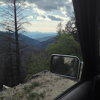
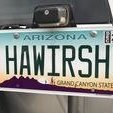
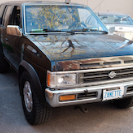

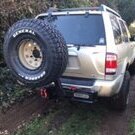
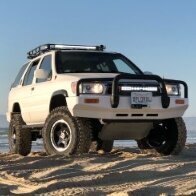

.jpg.5070bf3c97d25d63749cedcb8bd02b51.jpg)
